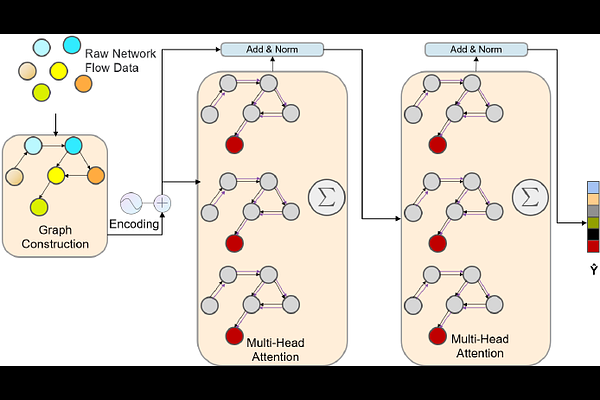Network Intrusion Detection with Edge-Directed Graph Multi-Head Attention Networks

Network Intrusion Detection with Edge-Directed Graph Multi-Head Attention Networks
Xiang Li, Jing Zhang, Yali Yuan, Cangqi Zhou
AbstractA network intrusion usually involves a number of network locations. Data flow (including the data generated by intrusion behaviors) among these locations (usually represented by IP addresses) naturally forms a graph. Thus, graph neural networks (GNNs) have been used in the construction of intrusion detection models in recent years since they have an excellent ability to capture graph topological features of intrusion data flow. However, existing GNN models treat node mean aggregation equally in node information aggregation. In reality, the correlations of nodes and their neighbors as well as the linked edges are different. Assigning higher weights to nodes and edges with high similarity can highlight the correlation among them, which will enhance the accuracy and expressiveness of the model. To this end, this paper proposes novel Edge-Directed Graph Multi-Head Attention Networks (EDGMAT) for network intrusion detection. The proposed EDGMAT model introduces a multi-head attention mechanism into the intrusion detection model. Additional weight learning is realized through the combination of a multi-head attention mechanism and edge features. Weighted aggregation makes better use of the relationship between different network traffic data. Experimental results on four recent NIDS benchmark datasets show that the performance of EDGMAT in terms of weighted F1-Score is significantly better than that of four state-of-the-art models in multi-class detection tasks.